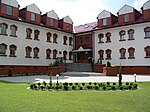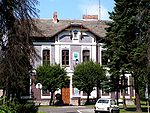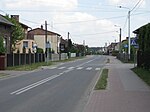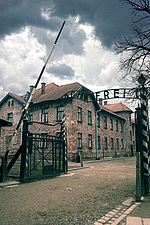Jedlina, Silesian Voivodeship
Silesian geography stubsVillages in Bieruń-Lędziny County
Jedlina [jɛˈdlina] is a village in the administrative district of Gmina Bojszowy, within Bieruń-Lędziny County, Silesian Voivodeship, in southern Poland. It lies approximately 5 kilometres (3 mi) south-east of Bojszowy, 12 km (7 mi) south of Bieruń, and 26 km (16 mi) south of the regional capital Katowice.
Excerpt from the Wikipedia article Jedlina, Silesian Voivodeship (License: CC BY-SA 3.0, Authors).Jedlina, Silesian Voivodeship
Pszczyńska, gmina Miedźna
Geographical coordinates (GPS) Address Nearby Places Show on map
Geographical coordinates (GPS)
| Latitude | Longitude |
|---|---|
| N 50.033333333333 ° | E 19.133333333333 ° |
Address
Pszczyńska
Pszczyńska
43-225 gmina Miedźna
Poland
Open on Google Maps










